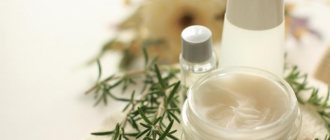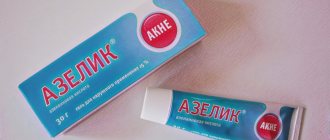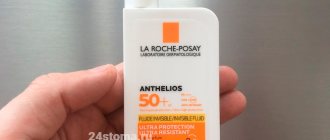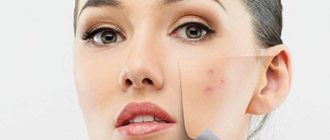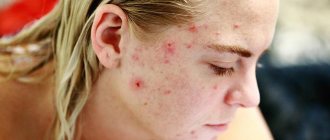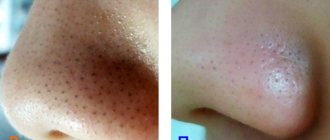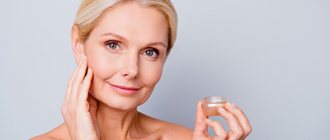When are systemic retinoids prescribed for acne?
Retinoids are a chemically related class of compounds to retinol and are prescribed for various forms of acne. Treatment of acne with systemic retinoids is justified in such cases9,44:
- Severe forms of acne (nodules, conglobate acne, acne formations with a high risk of scar formation).
- Acne that does not respond to other types of therapy.
- The presence of pronounced psycho-emotional disorders against the background of the development of acne.
- Tendency to resolve acne with scarring.
- Large affected areas of the back, face, and torso.
- Frequent relapses of the disease.
When prescribing complex therapy using systemic and topical retinoids, a specialist should discuss daily care with him. Using peelings, degreasing agents, visiting a solarium - all this enhances the effect of retinoids. Treatment usually lasts about six months. The specialist should explain that you should not plan a pregnancy during this period, since drugs with retinol have a teratogenic effect, that is, they can affect the fetus. Also, you should not visit a cosmetologist at this time, since many procedures are incompatible with taking retinoids.29
Retinoids (in-depth review)
Acnecutane, Roaccutane, Erase
Acnecutane, Roaccutane, Erase
Systemic retinoids contain the active ingredient isotretinoin. This substance has been used in world medicine for almost 40 years and is the gold standard for the treatment of acne and acne.
What kind of substance is this? This is trans-retinoic acid and it very powerfully suppresses the activity of the sebaceous glands.
When does acne occur?
Acne occurs when, under the influence of excessive effects of the hormone testosterone on the sebaceous gland, powerful production of sebum in large quantities is stimulated.
How do systemic retinoids work?
Systemic retinoids act on the sebaceous gland receptors, joining the sebaceous gland receptors, they inhibit the activity of sebum secretion from the gland and acne goes away.
The most frequently prescribed drugs from systemic retinoids (approved in the Russian Federation):
- Roaccutane
- Aknekutan
- Will erase
Comment from cosmetologist, dermatologist Yuliana Shiyan:
When I prescribe one of these drugs, I am asked why this particular drug and what is the difference between retinoids? All these drugs have one substance in common: Isotretinoin. Roaccutane was the very first to appear. This is the original drug, and all other drugs are its *generics. All generics of isotretinoin have their own registration certificates and are approved in Russia.
*GENERIC - approved copy of the original drug
Roaccutane and Sotret practically do not differ from each other either in formula or dose. When assigning them, there is no difference and the choice in favor of one or the other is immaterial. Acnecutane contains the same substance, but its formula is slightly different from Roaccutane and Sotret.
Why is Acnecutane more interesting for a cosmetologist and the patient himself, as a choice for treatment and how to understand which retinoid drug is better?
Isotretinoin is a fat-soluble substance. It is absorbed by the body only in combination with absorbed fats. If you take Roaccutane and wash it down with plain water, you will absorb less than 40% of it. If you take Acnecutan and drink it with plain water, it will be absorbed by the body by about 70%.
When prescribing Acnecutane, the doctor insures patients against their own mistakes. Patients may neglect fatty foods while taking Roaccutane and Sotret, forget to eat anything fatty or fatty foods are forbidden to them (on a diet), and the required dose of the drug must enter the body! Necessary, not a small part of it! Therefore, the drug Acnekutan is more preferable for the patient; a lack of fat when taking it is less likely to affect the outcome of treatment.
Its daily dose is regulated by the doctor, but there is also a cumulative dosage of the drug that the patient’s body must accumulate. It is when it is achieved that we can talk about a high chance of stable remission in the patient.
Due to the fact that Acnecutane is better absorbed, the manufacturer made slightly less active ingredient in one dose, which means: The working dose is 20 mg. Roaccutane corresponds to the working dose of Acnecutane with 16 milligrams of Isotretinoin.
The conclusion is simple: if less isotretinoin accumulates in the body, then the risks of side effects are also reduced. This is very good for the patient!
For ardent supporters of all original and original drugs, Roaccutane is recommended. But all other retinoids will be useful for you, provided that they are prescribed by a dermatologist, and you, in turn, comply with all the conditions for taking retinoids.
The effect of acne treatment with systemic retinoids
The use of systemic retinoids has the following effects44:
- restore terminal differentiation of keratinocytes, due to which redox processes and regeneration are normalized;
- stop the hyperproliferation of the epithelium of the sebaceous gland canals, the formation of detritus and promote its removal, due to this the production of sebum is reduced, the removal of sebum is facilitated, its composition returns to normal, the inflammation around the gland is reduced;
- have an anti-inflammatory, immunomodulatory effect, inhibiting inflammatory mediators.
A decrease in sebum secretion is observed after 2-3 weeks, which also leads to a reduction in the colonization of propionibacteria and their ability to synthesize pro-inflammatory mediators44.
Varieties
There are prescription and over-the-counter retinoid products available. Creams, serums and other skin care formulas labeled as "retinol" are available in pharmacies and stores and do not require a prescription.
Prescription retinoids have been around since the 1970s. The first type, under the brand name Retin-A (the name of the drug tretinoin), was originally created to treat acne and pimples. Today, dermatologists still prescribe it for reasons other than treating breakouts.
Prescription formulas primarily contain retinoic acid. It is already in its “active form” and does not require conversion after application. Retinol is described as “gentler than retinoic acid,” but with consistent practice it can produce similar results.
There is another group of substances called “pro-retinols” (also called retinyl palmitate, retinyl acetate, retinyl linoleate). They act more gently and are less likely to cause associated negative effects. But they are weaker and will take longer to gain benefits.
When shopping at the pharmacy or with the help of a dermatologist, you can find liquid, gel and other forms, including retinoid cream, retinoid tablets (oral retinoids), serums, etc. Gels are recommended for oily types, while creams are better for those who tend to be dry.
Retinoids that are beneficial for the face and help in treatment are contained in the following drugs: etretinate, acitretin, seletinoid G, tretinoin (Retin-A, generic), tazarotene (avage, tazorac), adapalene (Differin), alitretinoin, bexarotene, isotretinoin ( Accutane) taken orally.
Side effects from treatment with systemic retinoids
Therapy with systemic retinoids should only be carried out under the supervision of a specialist. While taking these medications, you need to take a biochemical blood test once a month: check the level of liver enzymes (ALT, cholesterol, alkaline phosphatase, AST, triglycerides). If these indicators increase, the specialist may reduce the dose of the medicine. If there is an increase in triglycerides and there are complaints about the functioning of the liver and gastrointestinal tract, it is necessary to additionally check the levels of lipase and amylase in order to detect pancreatitis in time44.
When treating acne* with retinoids, you should stop drinking alcohol and use sunscreen. The drug should not be combined with tetracycline, since both drugs can increase intracranial pressure44.
Retinoids may cause the following side effects44:
- cheilitis;
- dry skin;
- conjunctivitis,
- dry mucous membranes;
- increased photosensitivity;
- deterioration of night vision;
- headache;
- myalgia, arthralgia;
- transient hair loss.
The most common situation that worries patients at the beginning of treatment with systemic retinoids is the so-called retinoic dermatitis. It develops approximately when a certain cumulative dose of the drug is reached in the blood. This reaction is considered normal. Irritation and redness of the skin appear, especially in places where it is thin. Itching and sensitivity may be felt.29
Side effects stop after you stop taking the drugs. In the first 30-60 days, symptoms may worsen. It is highly not recommended to reduce the dosage on your own or stop taking medications; you should contact a specialist who, if necessary, will adjust the course of therapy44.
The mechanism of absorption of retinol and tretinoin by skin cells
Skin cells contain receptors that interact with retinoic acid. Activation of receptors leads to the development of a signal for the cell nucleus to begin the synthesis of certain organic substances.
The chain of chemical reactions is as follows: retinol, interacting with alcohol dehydrogenase enzymes, changes and turns into retinoaldehyde. At the next stage, this substance becomes retinoic acid - an intercellular communicator. Retinoic acid can also be formed from esters of retinyl palmitate and retinyl acetate, which, interacting with the enzyme esterase, are converted first into vitamin A (retinol), and then, along the chain described above, into retinoic acid.
How to take vitamin A tablets: recommendations and dosages
The dosage of the drug is selected individually according to the age, gender and health status of the patient. Retinol tablets are used strictly according to the instructions, since an overdose can lead to unpleasant consequences. The norm of vitamin A in accordance with age characteristics will be distributed as follows:
| Age | Drug dosage, mg |
| From 4 to 8 years | 0,9 |
| From 9 to 13 years | 1,7 |
| From 14 to 18 years old | 2,8 |
| From 19 years old | 3 |
To obtain an effective result, it is recommended to use vitamin A in tablets while eating fatty foods. The drug is drunk after meals. Most often, the course of treatment lasts 30 days. It must be repeated after 2 months.
Benefits for facial skin
Do retinoids really work? Research shows that the compounds have the following benefits:
- Reducing acne.
- Reduce fine lines and wrinkles by preventing the breakdown of dermal matrix damaged by UV exposure.
- Faded patches of actinic keratoses (possibly precancerous epidermal cells).
- Disappearance of age spots and improvement of overall complexion/tone.
- Acceleration of surface layer renewal.
- Fighting psoriasis and warts.
- Preventing water loss in the dermis.
- Potentially helps fight certain types of skin cancer due to the way retinoids regulate apoptosis, cell differentiation and proliferation.
Let's tell you more about how drugs with retinoids work.
Fight against age-related symptoms
Clinical practice has established that vitamin A and retinol regulate many transcription factors located in the nuclei of various cells. This means they can improve skin health at the cellular level.
Studies have shown that cosmetic treatments with retinoids can prevent the appearance of wrinkles, folds, and age spots in several ways. This includes increasing collagen production and preventing collagen loss. Collagen is a protein involved in the formation of the dermis, connective tissue throughout the body.
Another mechanism is stimulation of the formation of new blood vessels in the dermis.
People who use creams and serums with retinoids usually notice that the surface of the face becomes elastic and firm. For enhanced anti-aging effects, it is preferable to combine creams containing them (for example, tretinoin, a powerful and widely used anti-photoaging agent) with alpha hydroxy acids (AHAs).
For acne
Retinoids are the most commonly prescribed product by dermatologists for the treatment of mild to moderate acne on the face and body. They are the mainstay of topical acne therapy, according to the American Academy of Dermatology. They have a comedolytic effect, eliminate the precursor of microcomedone lesions, have an anti-inflammatory effect and allow maintaining clearance.
In other words, they inhibit the formation of breakouts by unclogging clogged pores and removing dead skin particles. They work with topical antibiotics to kill acne-causing bacteria.
For moderate to severe acne, retinoid tablets may be prescribed. They reduce oil production, help kill bacteria and reduce inflammation, and prevent acne, although side effects are common.
For pigmentation
What is impressive about retinol is its ability to affect the dermis not only at the cellular, but also at the genetic level. Medical studies show that these substances influence gene expression, resulting in a smoother complexion, softening of rough areas and even pigmentation.
Retinoids are popular for treating pigmentary disorders that are typically difficult to treat. Reduce symptoms caused by post-inflammatory hyperpigmentation, melasma, actinic lentigines.
Reduce symptoms of psoriasis
Retinoids help treat serious diseases. They are ready to assist in reducing the hyperproliferation and exfoliation of epidermal cells that contribute to the development of psoriasis. They are taken to control inflammation and restore normal differentiation of the epidermis.
Experts debunk myths
Here are some common myths about retinoids that are NOT true:
- If they cause irritation, stop using them. Fact: These products usually cause mild reactions: redness, dryness, flaking, for the first one to two weeks. You should continue to apply a small amount until the skin adapts. As long as your reaction is not severe or painful.
- Stronger products are better. In fact: a concentrated drug may be too heavy for your skin, which may cause additional negative effects. It is preferable to start with a weak remedy, and then, when you find that it is well tolerated, gradually move on to a stronger type. Some dermatologists consider tazarotene more powerful than tretinoin, and adapalene is considered the mildest.
- Smoothes the skin through exfoliation. Truth: Unlike ingredients that actually exfoliate the skin by removing dead debris, retinoids work differently at the cellular level. They may cause superficial flaking, but this is not what actually provides the smoothing result.
- They work quickly. Truth: Real results are visible within approximately 12 weeks or more if used regularly.
How to use
Retinoids in cream tend to have a strong effect depending on the type. Therefore, a few drops or a pea-sized amount is enough to achieve visible results. If you are taking prescription medications, carefully follow your doctor's dosage recommendations, which is important to avoid negative side effects.
Over-the-counter topical retinoids are available in 0.1% concentrations. Prescription ones contain 0.3% retinol. It is advisable to purchase the product in aluminum packaging. This protects the formula from changes due to exposure to air and light.
When you first start using these ingredients, apply once every three days or every other day. The skin must adapt. Then gradually move on to applying it at night every day until you feel side effects.
Most experts recommend using a retinol cream, serum, etc. at night. Sunlight can change the effect of this ingredient. You should wait 15-20 minutes after washing before applying for better absorption.
Retinoids may increase flaking and redness (although some recent research suggests this may not necessarily be photosensitivity). Dermatologists recommend applying sunscreen throughout the day when using them, or being careful to limit exposure to direct sunlight.
You can apply it all over your face, right up to your eyes (but not into your eyes) in a thin layer. Apply your favorite moisturizer directly onto it. It will have a beneficial effect when applied to the neck, chest, arms, and forearms.
Try making a homemade retinol face cream using rosehip and lavender. Add moisturizing and anti-aging ingredients to this nourishing cream: rosehip seed oil, carrot seed oil, shea butter, green tea extract, lavender and frankincense essential oils.


